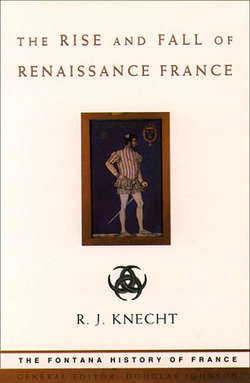Читать книгу The Rise and Fall of Renaissance France - R. Knecht J. - Страница 48
Mysticism
ОглавлениеTerminism was too dry and formal a doctrine to satisfy many Christians; sooner or later it was bound to provoke a reaction. A strong mystical tradition existed in Paris, reaching back to such fourteenth-century teachers as Pierre d’Ailly and Jean Gerson, but it was in the Low Countries that late medieval mysticism underwent a remarkable flowering. A major ascetic movement which drew large numbers of laity was the Devotio Modema. Its followers, the Brethren of the Common Life, avoided formal vows while sharing a life in common dedicated to poverty, chastity and obedience. Their founder, Geert Groote (1340–84), wanted religion to be simple, devout and charitable. By the early fifteenth century the Brethren had numerous houses in the Low Countries, Germany and the Rhineland. Their ideals were best expressed in the Imitation of Christ by Thomas à Kempis. The Brethren were closely associated with a house of Canons Regular founded at Windesheim in 1387. Rejecting the Nominalists’ dumb acceptance of the church’s teaching, they found the truth of Christianity in the Bible and liked to read St Augustine and St Bernard, the two great exponents of the inner life and divine love.
An important link between the mysticism of the Low Countries and France was Jean Standonck, a pupil of the Brethren who eventually settled in Paris. After completing the arts course, he entered the collège de Montaigu to study theology and in 1483 became its principal. Though French was not his native tongue, he became a popular preacher. He relinquished the personal use of money and, chastising his body relentlessly, gave all he had to the poor. At Montaigu he imposed a harsh discipline on the students, hoping to develop among them an active and mystical piety. The rule he drew up for a college of poor students which he set up alongside Montaigu has been described as ‘one of the capital monuments of the Catholic reformation at the start of the sixteenth century’.
While the Faculty of Theology continued its arid Nominalist teaching, many Parisian clergy turned to St Bernard and St Augustine for spiritual comfort. The mystical writings of d’Ailly and Gerson were also popular, as were books produced by the Brethren of the Common Life and the canons of Windesheim. However, it was mainly through the Imitation of Christ that theologians in Paris were influenced by Dutch religious thought. Many editions were available after 1490: a partial French version was printed in 1484 and a full translation in 1493. It was the antidote to the arid discipline of the the Terminists and Scotists; it sustained and satisfied the desire for a more personal faith which scholastic teaching threatened to stifle.
